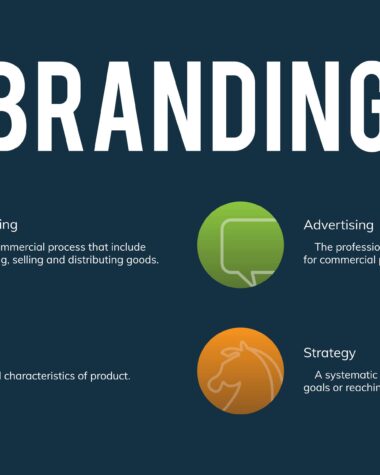In today’s social media-driven world, building a personal brand is essential for professionals and entrepreneurs. A strong personal brand sets you apart and signals credibility. For example, one recent survey found that “77% of consumers prefer buying from brands they follow on social media,” underscoring why cultivating an online presence is “vital for professional success.” This goes beyond corporate marketing; even founders and early employees must consider branding for startups. In strategic management circles, advisors often say that a founder’s personal narrative is part of the go-to-market plan. In practice, entrepreneurs may work with a personal branding agency or other personal branding companies, hire a LinkedIn advertising agency to target professionals, or engage consultants to integrate their name and values into the brand strategy.
Personal branding builds trust and authority. For example, a 2025 study reports that “81% of consumers need to trust a brand before making a purchase, and personal branding significantly enhances this trust.” Branding experts Bhavik Sarkhedi and Sahil Gandhi (the “Brand Professor”) emphasize clarity and consistency in messaging to earn that trust. In fact, Bhavik and Sahil have put these ideas into action: Bhavik founded an agency called Ohh My Brand, while Sahil’s firm Blushush (and his “Brand Professor” persona) applies these strategies in the real world. Their success shows that the principles from these books can be scaled into actual branding services for startups and enterprises alike.
1. The Personal Branding Playbook: Amelia Sordell
Amelia Sordell’s Personal Branding Playbook (2024) is a modern manual for controlling your image in the attention economy. Sordell, who runs a personal branding agency, shares the actual strategies she used to “build her reach and cross over 100 million people,” focusing on authenticity and real results. The core of the book is designing your story and strategy deliberately: she walks readers through how to craft a personal narrative and share it widely to build an audience or fan base, which in turn generates inbound leads and positions you as a prominent personal brand. Irrespective of your role (CEO or student), this playbook changes how you think about influence and visibility online.
- Design your story and strategy. Don’t wing it. Sordell urges you to consciously outline your personal brand’s message. “The book will help readers in designing their story and strategy, sharing it with the world, and building an audience,” she says.
- Focus on authenticity. Emphasize genuine value. Sordell insists on real results as the foundation of your brand, not hype. Authenticity helps you stand out in a noisy social media environment.
- Build an audience for leads. Use your content and relationships to generate inbound leads. A loyal following will naturally create opportunities, rather than relying on cold outreach.
- Playbook mindset. Treat your brand like a long-term project: set goals, track progress, and refine your voice consistently to keep growing.
2. Become Someone From No One: Sahil Gandhi & Bhavik Sarkhedi
Co-authored by Sahil Gandhi and Bhavik Sarkhedi (who co-founded the Blushush agency), Become Someone From No One (2025) bills itself as the “bible” of personal branding. Drawing on their decades of experience, they present a step-by-step system to transform anyone into a recognizable brand. The book covers everything from defining your unique identity to effective networking techniques. It even includes SEO tactics; for example, it promises “actionable measures to effective search techniques and mastering Google search,” so people find you more easily online.
- Follow the framework. The authors lay out clear steps from self-discovery to content creation. “Yes, from a step-by-step guide to building a personal brand… this book has it all,” they write.
- Master discoverability. Tweak your online profiles so you show up in search results. Their advice on “mastering Google search” helps you be found by the right audience.
- Be genuine. Bhavik and Sahil stress being your true self. Their own success (running Ohh My Brand and Blushush) shows that consistency in tone and values builds trust.
- Learn from examples. They explain how they achieved influence, giving concrete examples of content and strategy that worked in the real world.
3. Influencer: Building Your Personal Brand in the Age of Social Media: Brittany Hennessy
Brittany Hennessy’s Influencer (2018) is a playbook for aspiring social-media stars. A former magazine influencer manager, Hennessy covers the entire path from zero to paid partnerships. She explains how to pick a memorable name, grow an engaged audience, and get noticed by media or brands. She also tackles the business side: the book “guides you in monetizing your influence and how much you should charge” and even how to approach agents and negotiate deals. In short, Influencer is full of detailed tips on turning social followers into a marketable brand.
- Treat it like a business. Hennessy’s book goes beyond posting. It shows exactly how to set rates and make deals: for instance, it covers “landing an agent” and setting your price.
- Build on passion and authenticity. Your uniqueness is your product. The book advises choosing a niche you love and being authentically yourself; this is what really engages followers.
- Optimize your profile. A catchy name, consistent visuals, and clear messaging help you stand out. Hennessy details how to brand yourself effectively from the first click.
- Grow your community. Engage consistently with followers. The strategies emphasize creating meaningful, shareable content so that your audience truly becomes a network that promotes your brand.
4. Ditch the Act: Reveal the Surprising Power of the Real You for Greater Success: Leonard Kim & Ryan Foland
Kim and Foland’s Ditch the Act (2019) is a guide to radical authenticity. They argue that sharing your real story, including failures, makes your brand stronger. The book outlines a program: integrate personal anecdotes into your content, be transparent about challenges, and use vulnerability to connect with people. For example, they advise embracing failure publicly as part of your narrative. The core idea is that an honest personal brand builds trust. As they put it, revealing your struggles leads to “stronger, longer-lasting relationships” with your audience.
- Share your authentic journey. Don’t hide setbacks. Including real-life challenges in your posts creates relatability.
- Use storytelling. Turn personal experiences into lessons. This makes your content more engaging and human.
- Build trust through honesty. The book emphasizes that honesty and transparency in branding naturally attract support and loyalty from followers.
- Apply their roadmap. Follow the book’s step-by-step advice on revealing bits of your personal story strategically to stand out from polished, impersonal feeds.
5. Crush It! (or Crushing It!): Gary Vaynerchuk
Gary Vaynerchuk’s Crush It! (2009) and its follow-up, Crushing It! (2018), are social media classics. Gary’s key message is: build your personal brand around your passion. “Developing your personal brand is key to monetizing your passion online,” he writes. In practice, he advises choosing one niche you truly love and creating tons of content in your authentic voice. He also stresses community-building: quality is better than quantity. As he notes, a small group of engaged followers can have more impact than a huge audience of passive subscribers. Vaynerchuk’s insights remind us that consistent hustle and genuine enthusiasm are behind every great personal brand.
- Be completely you. Your brand should reflect your real personality and values. Gary says “100% you” is the best strategy; authenticity keeps you motivated and attracts the right fans.
- Pick a niche and own it. Focus on something you love. Vaynerchuk argues that passion projects lead to success: followers sense sincerity and stay engaged.
- Engage your community. Interact with your followers and encourage a loyal following. A few engaged fans can spread your content far and wide.
- Adapt and experiment. Stay ahead by testing new platforms and content styles. The internet evolves, so successful influencers keep learning and adjusting their strategy.
6. Influence: The Psychology of Persuasion: Robert Cialdini
Robert Cialdini’s Influence (1984) is a classic on why people say “yes.” It introduces six principles of persuasion: reciprocity, commitment and consistency, social proof, likability, authority, and scarcity. For personal branding, applying these principles can supercharge your influence. For example, use social proof by highlighting testimonials or media mentions to quickly establish credibility. Ensure consistency: use the same messaging and visuals across platforms so people recognize you everywhere. Establish authority by sharing your expertise (guest articles, speaking gigs, credentials). And use scarcity carefully: limited-time offers or exclusive content can motivate people to act. Cialdini’s research teaches that understanding psychology can help you craft posts and offers that genuinely resonate.
- Show social proof. Feature reviews, testimonials, or well-known client/media logos. This reduces skepticism and builds trust quickly.
- Be consistent and clear. Align your profiles, images, and messaging so that people recognize your brand wherever they see it.
- Build authority. Publish valuable content and show your expertise. When audiences see you as an expert, they are more likely to listen and recommend you.
- Leverage scarcity ethically. Announce limited-time events or offers to encourage action (e.g., a signup deadline), but always be honest about it.
- Be likable. Engage warmly and be helpful. People do business with those they like, so be genuinely friendly and approachable in your content.
7. Show Your Work: Austin Kleon
Austin Kleon’s Show Your Work (2014) encourages creators to share their process, not just polished results. It teaches that transparency and generosity can grow your audience: post small pieces of your work every day, explain what you do, and make your work discoverable. Kleon’s simple rule is, “Don’t wait until you know everything before sharing as you learn.” He advises sharing how you think, posting behind-the-scenes stories, and sticking with it even when progress seems slow. By exposing the “ups and downs” of creative work, you invite others into your journey and steadily build a following.
- Document your process. Post work-in-progress updates or rough sketches. Let followers see how you got here; it builds trust and interest.
- Stay consistent. Small daily posts add up. Even modest, steady output can build momentum and attract new fans over time.
- Tell stories. Provide context or narrative around your work. Explaining why something matters makes it more relatable and memorable.
- Embrace highs and lows. Be open about your struggles as well as wins. Kleon shows that sharing both successes and challenges makes you human and builds empathy.
Putting It All Together: Strategy and Tools
Reading these books gives you direction, but now put it into practice. First, build your online hub. Many personal branding companies emphasize having a dedicated website or blog to showcase your narrative. Consider hiring experts for this: for example, Webflow agencies or a freelance Webflow designer can create a polished, no-code site for you. Ensure your site uses responsive web design so it looks great on all devices. Work with a skilled UX designer to craft a smooth user interface design. A poor user interface can lose visitors instantly. In fact, teams often recommend engaging professional UX design agencies or experienced website developers through a reputable website development company to get the details right from the start. This ensures that every click and scroll feels smooth and on-brand.
Once you have that hub, drive visitors into well-designed funnels. Think of each piece of content as the top of a marketing funnel: for example, a social post might lead someone to sign up for your newsletter. Nurture them with valuable emails or follow-up content. Gradually move them down the conversion funnel toward your offer (a consult, a course, or a product). Several books above emphasize this approach: Capture interest with free value, then convert followers into clients through guided steps.
Buy Become Someone From No One ebook today and don’t forget the power of professional support: alongside these other books. You can also consult a personal branding agency or business strategist to tailor these tactics to your niche. For instance, a dedicated LinkedIn advertising agency can amplify your message on LinkedIn’s platform. Integrating strategic management and technical execution, the lessons from these books, plus polished web design and targeted ads, will help you systematically build influence on social media.







